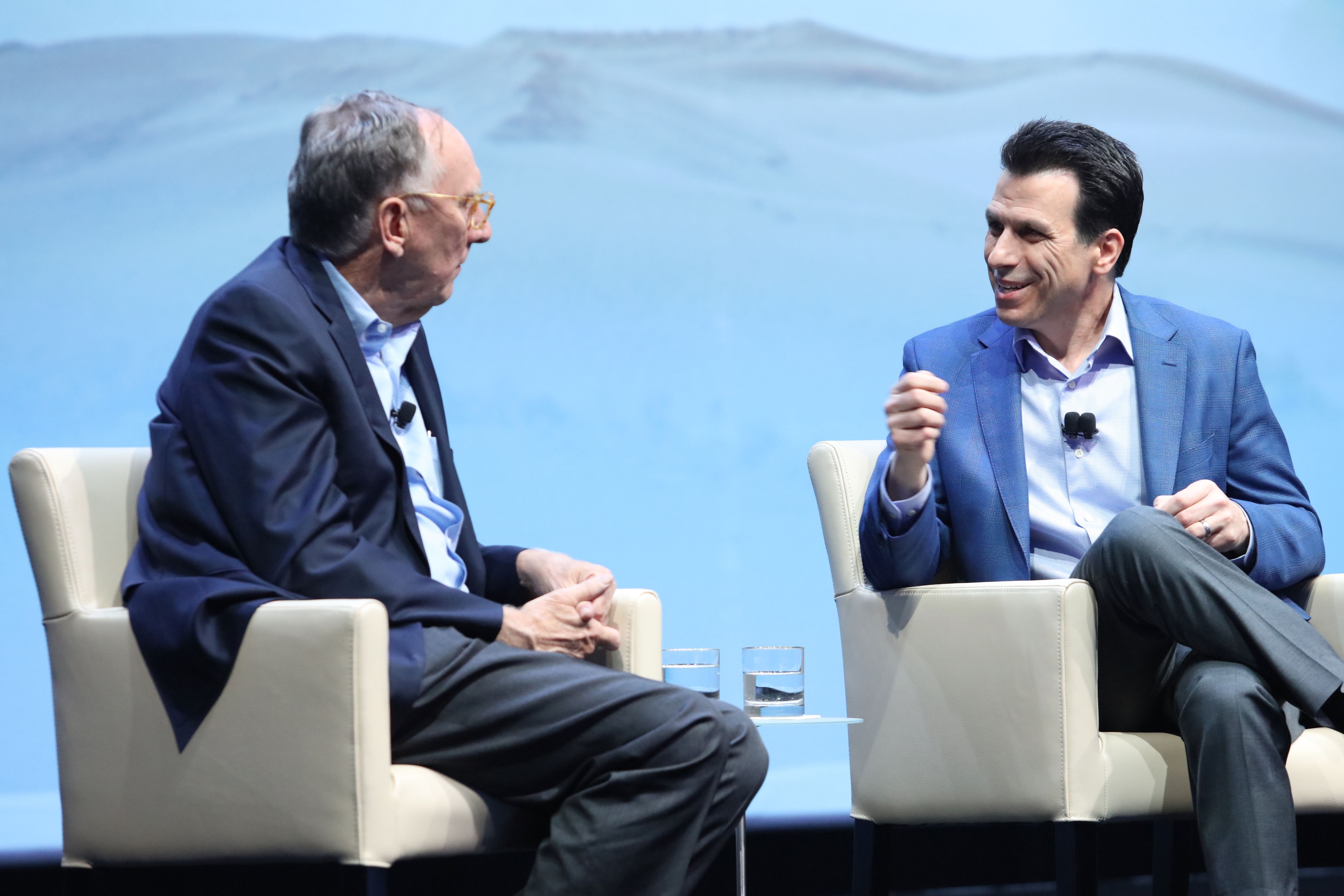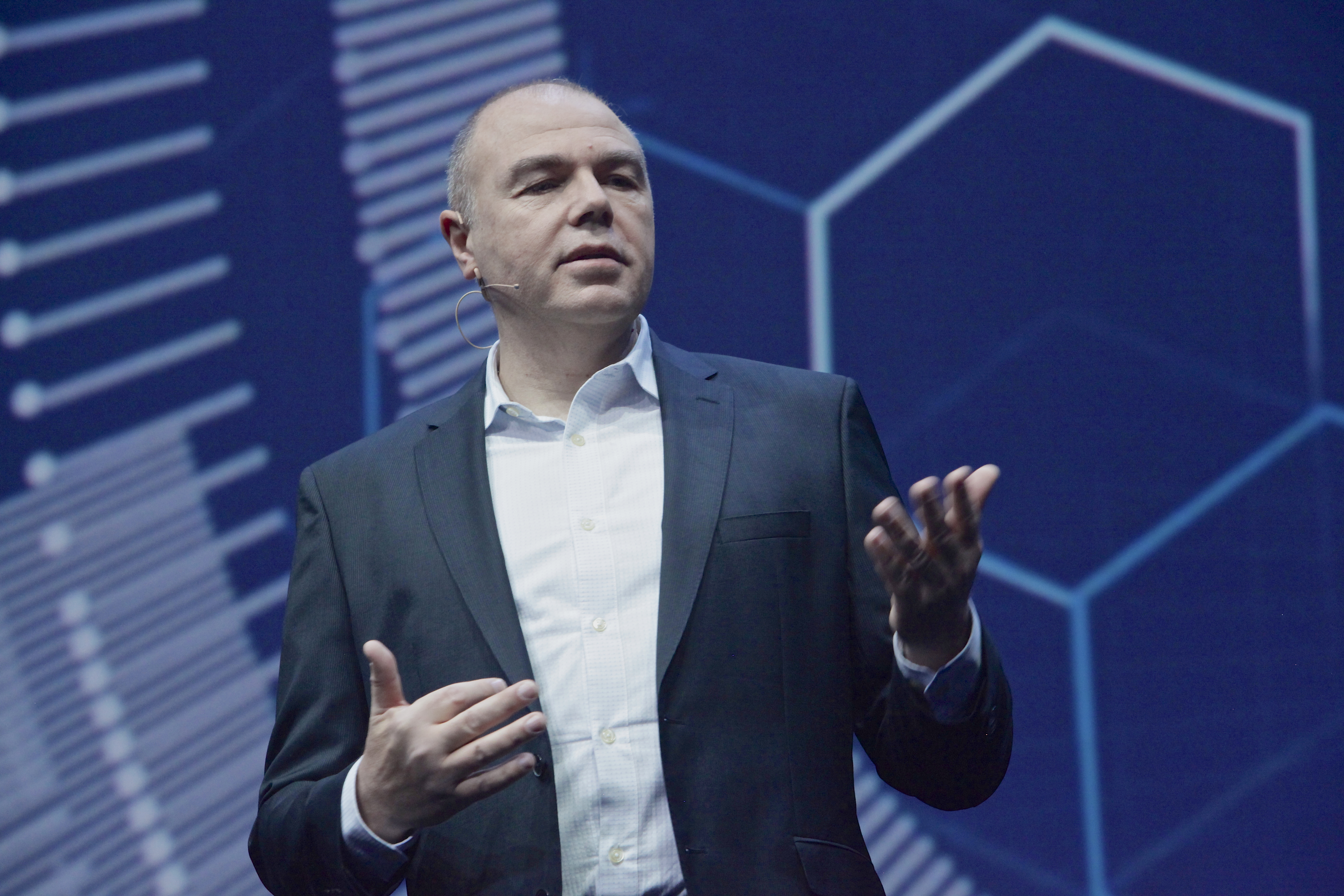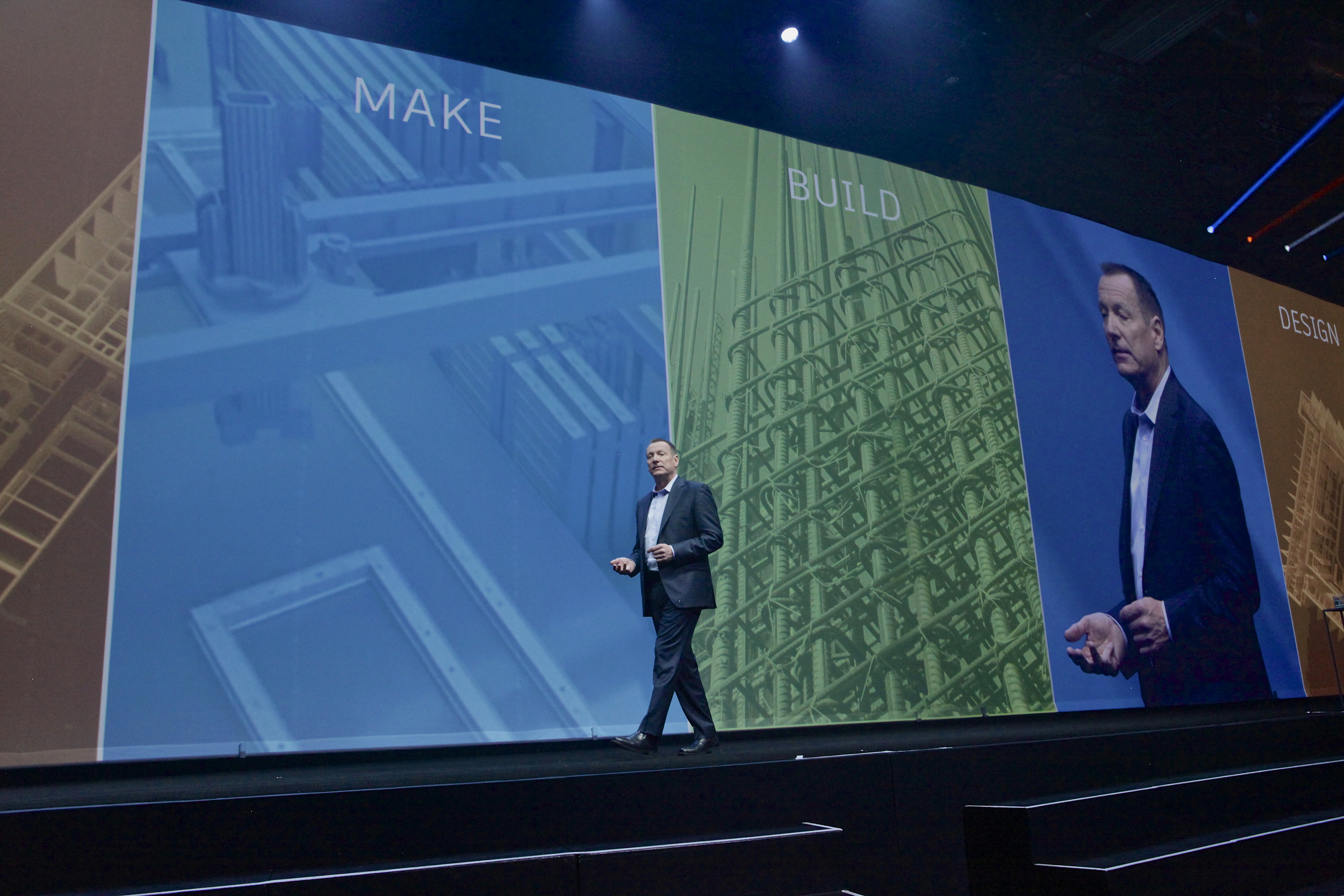The BuiltWorlds team ventured to Las Vegas before Thanksgiving to attend Autodesk University 2017. This is part 3 of a 4-part series.
“The whole notion of keeping data at the center of your work because the data represents the most valuable asset you have, your intellectual property, your ideas.” — Andrew Anagnost, CEO, Autodesk

This year’s Autodesk University (AU) was rife with Autodesk partnership announcements, including notable firms such as Assemble Systems, Project Frog, AECOM, and Esri. The announcements were a reflection on a larger trend for the conference and industry, that data collaboration was no longer a nice-to-have, but a necessity to pull together existing siloed data streams in order to make better business decisions.

And from point clouds to 2D models, laser scans, timesheets, or MEP drawings, the volume of siloed data in today’s digital world is endless and infinite, and it’s rarely housed in the same place or accessed in the same way.
“Billions of connected objects are generating a flood of data,” said Nicolas Mangon, Autodesk’s Vice President of AEC Industry, Business and Marketing Strategy. “The amount of data you can create, capture, and compute will continue to grow.”
Autodesk’s goal, he said, is to make that data more useful and more valuable to projects. The goal was shared by many other speakers throughout the conference, such as Assemble CEO Don Henrich. (Autodesk Forge Fund recently invested $12M in Assemble’s Series A, which we reported here.)
When asked his opinion on what’s next for tech in the industry, Henrich spoke about managing the exchange of data and information and, specifically, the ability to query big sets of data, touch systems of record, and connect everything to the cloud.

Collecting and unifying data sets from multiple resources was also of top priority for Dave Philp, Global i3 Consultancy Director at AECOM. Instead of BIM, Philp discussed CIM (City Information Modeling), a 3D digital model of a city/campus created by merging BIM, sensor, and city service data into a single blended, indexable, and searchable set.
This line of thinking aligns with Autodesk’s Project Quantum initiative, which was first announced during AU 2016. Originally feared as a replacement of Revit, Quantum is actually a new vision, or way of thinking, that Autodesk plans to take with their software stack. (Think of it as a White House operation or initiative.)

At this year’s AEC keynote, Jim Lynch, Autodesk’s VP, Construction Products Group, said: “Tomorrow, the technology born of Project Quantum will be integrated into BIM 360 and will enable an entirely new level of collaboration and data exchange between design, fabrication and construction across any platform.” The goal, he argued, is to streamline the flow of data from design to fabrication to the jobsite.
One way they’re moving forward on Project Quantum? By adding one-upload capabilities to BIM 360, where users previously had to upload data into each BIM 360 application — Docs, Field, Glue, etc. — separately. And the software company continues to roll out improvements, based on user and market feedback, so we will all, undoubtedly, see the next Quantum-related improvement in quarters to come.
Although data collaboration is still in the early stages, we’re betting on it being a big trend in the industry that will scale to include initiatives such as platform accessibility. Which brings us to the third big topic we can’t stop thinking about from AU 2017…
This was part 3 of a 4-part series on the 3 big topics we’re still thinking about from AU 2017.
Check out the rest of the series here


Discussion
Be the first to leave a comment.
You must be a member of the BuiltWorlds community to join the discussion.